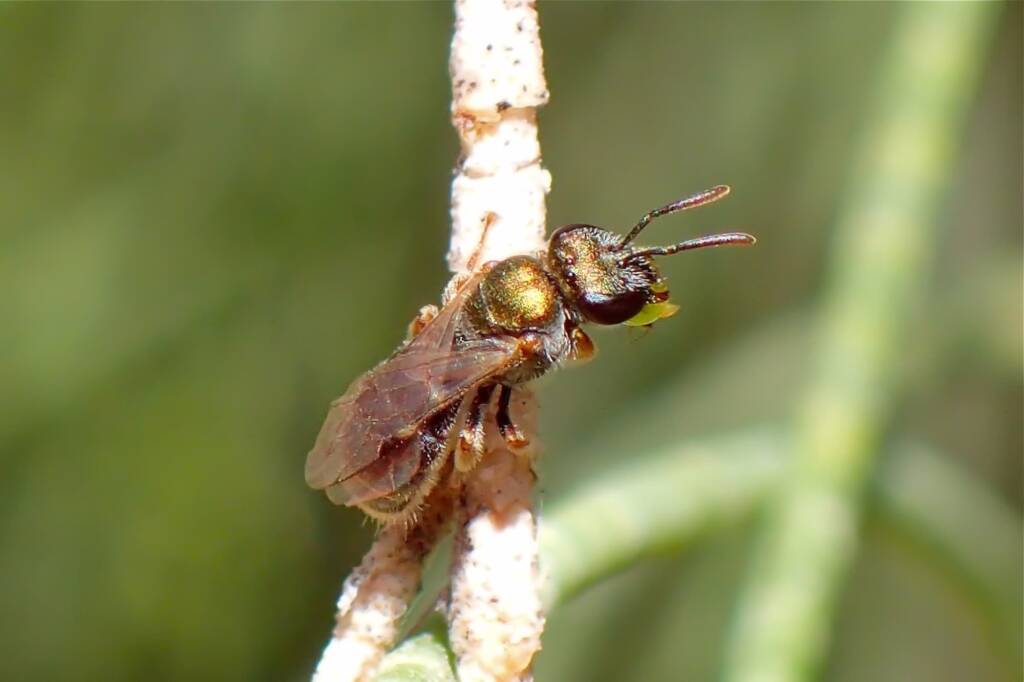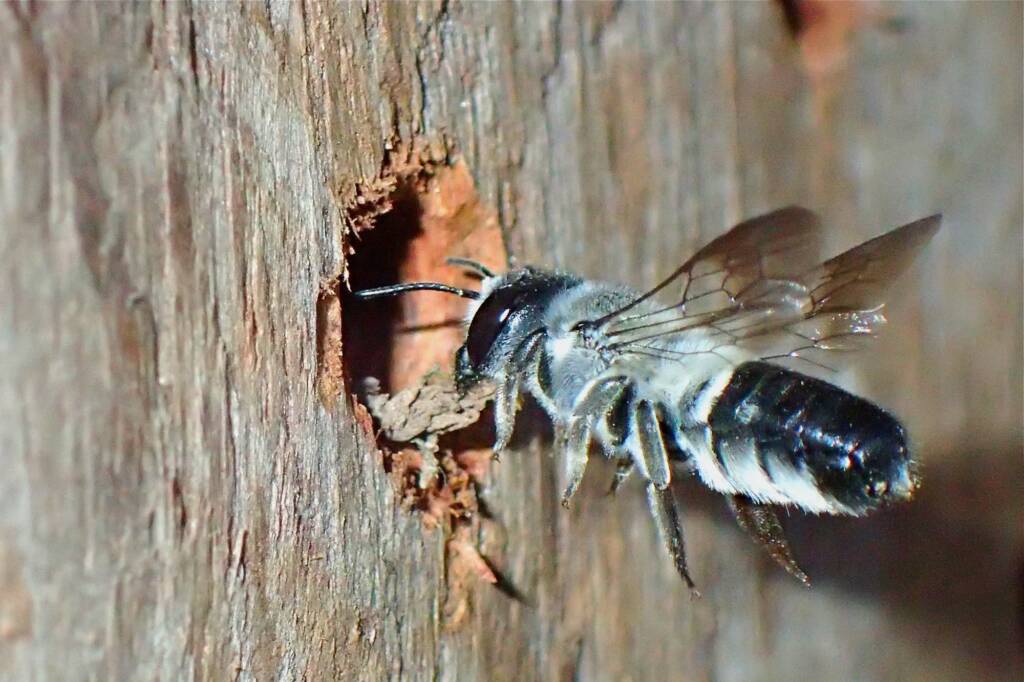Bees AnatomyBees Antenna It’s in the eyes Pre-pygidial fimbria Wings of the bee
Images and Contributor Author Gary Taylor ◦
When you look closely at a bee, you will see that they have 4 wings (two sets of wings). They are different to the wings of flies who only have on one set of wings. When you look at wasps, who also have 4 wings, the bees wings are different to wasps wings, in that the wasp wings are long and slender in shape, whilst the bees wings are shorter in comparison and more shapely.
Most bees will fold their wings across their back, over each other, unlike flies who hold their wings splayed outward.

Some points about the wings of a bee are:
- two pairs.
- both pairs are membranous and clear. There are few veins and cross-veins and have visible cells.
- the veins do not extend to the wing margin.
- the hindwing are always shorter and narrower than the forewing.
- the fore and hindwing are coupled tightly together by a row of minute hooks called hamuli.
- when at rest the wings are held flat over the body, overlapping in some species.
A hamus or hamulus is a structure functioning as, or in the form of, hooks or hooklets. Both terms are from the Latin, hamus meaning “hooks” (the plural is “hami“). Hamulus is the diminutive meaning “hooklet” or “little hook”. From this comes the plural is hamuli.
Hamulus, https://en.wikipedia.org/wiki/Hamulus (last visited May 8, 2022)

The bee’s wings are made of a material called chitin (pronounced KITE-IN). This material is similar to keratin (the material that makes up your fingernails).
When bees are not in flight the larger forewings cover the hindwings along the abdomen. During flight the wings function as a single pair. This movement is facilitated by a series of hooks, known as hamuli, that are on the leading edge of the hindwings, and fits into grooves on trailing edge of the forewings. This allows for the forewing and hindwing on each side of the body to function as a single surface.

The wings are attached and powered by the longitudinal and vertical flight muscles in the thorax of the bee. The alternating contractions of the vertical and longitudinal muscles is what raises and lowers the wings, providing movement through the air.
The wings of the bee also carry nerves, hemolymph (a fluid equivalent to blood in most invertebrates) and breathing tubes.

One of the indicators of the age of a bee and if a bee is nearing “end of life” are the state of the wing margins. In older bees the wings become tattered. In many bees, they also lose the strength of their body colour, become more muted.

Footnote & References
- Selection of bees, photographs © Gary Taylor, Western Australia
- Bees: Suborder Apocrita, Australian Museum, https://australian.museum/learn/animals/insects/bees-suborder-apocrita/
- A Bit About Wings, by Dan Wyns, 13 August 2018, Bee Informed Partnership, https://beeinformed.org/2018/08/13/a-bit-about-wings/
- About Bees, Bee morphology, Exotic Bee ID. USDA APHIS Identification Technology Program (ITP) and Utah State University. Fort Collins, CO., http://idtools.org/id/bees/exotic/bees_morph.php
Bees AnatomyBees Antenna It’s in the eyes Pre-pygidial fimbria Wings of the bee
Bee BehaviourBubbling Bees Buzz Pollination Operculum lifting behaviour
BeesBees Anatomy Bee Behaviour Blogging Bees… Bees – image index Amegilla Bee Apis mellifera Austroplebeia australis Austrothurgus Braunsapis sp Ceylalictus perditellus Colletidae Euryglossinae Exoneura Homalictus Hyleoides bivulnerata Lasioglossum Lasioglossum (Chilalictus) Lipotriches Megachile Meroglossa Stenotritidae Tetragonula Thyreus Xylocopa
